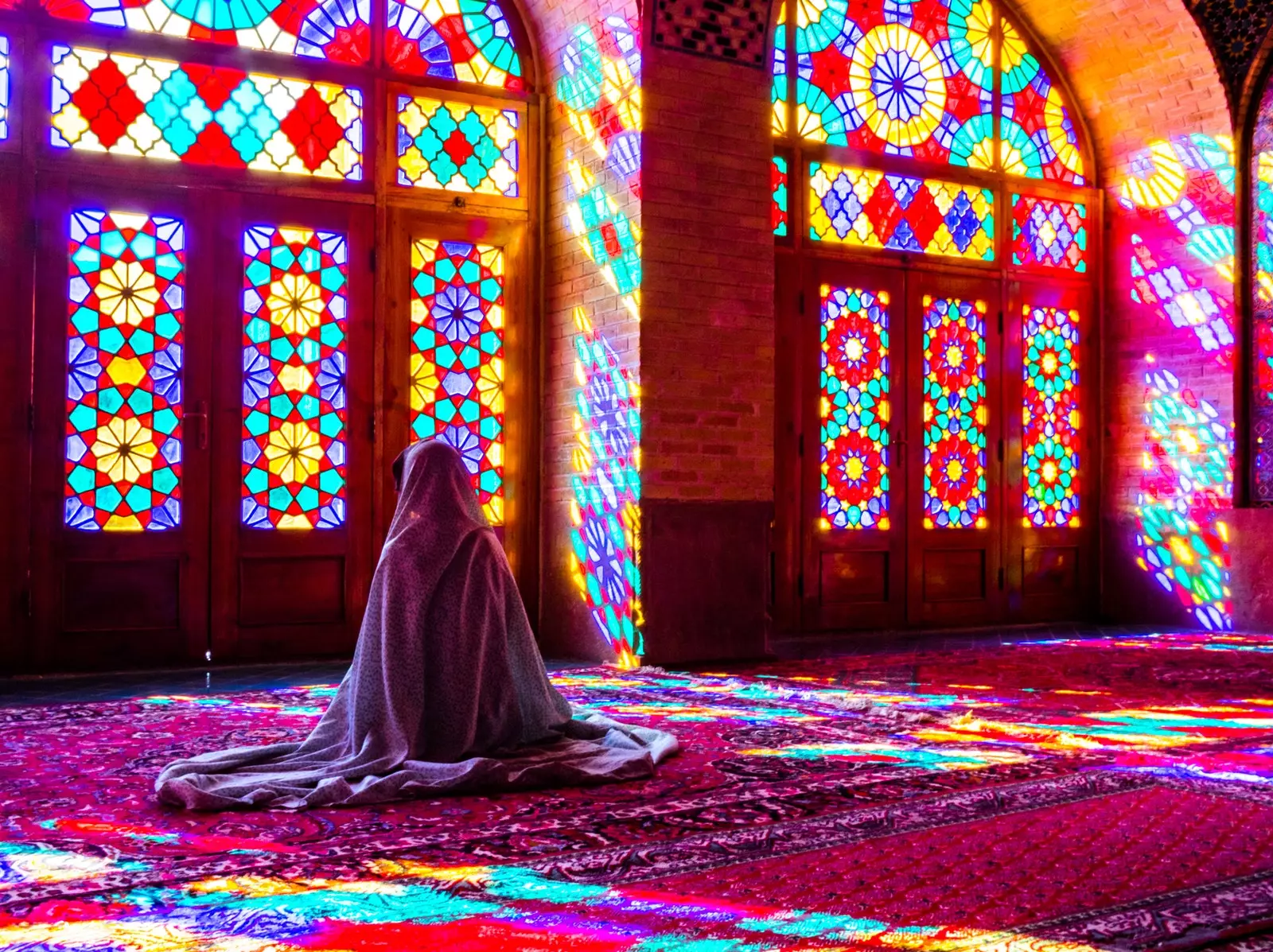
Shiraz: pure poetry
I make sure to wrap my headscarf properly before I leave my room at the beautiful Hotel Forough, in the heart of Old Town. Shiraz: In Iran, women are prohibited from showing their hair, including foreign women, and it is not a question of breaking the rules.
A narrow dimly lit street brought me here last night by pure chance, and blessed the hour in which I discovered this wonderful corner of the city.
After eating the succulent breakfast of natural juices, toast and yogurt, I put my feet outside just when the muezzin from the neighboring mosque begins to call for prayer. My journey begins in the city of poets.
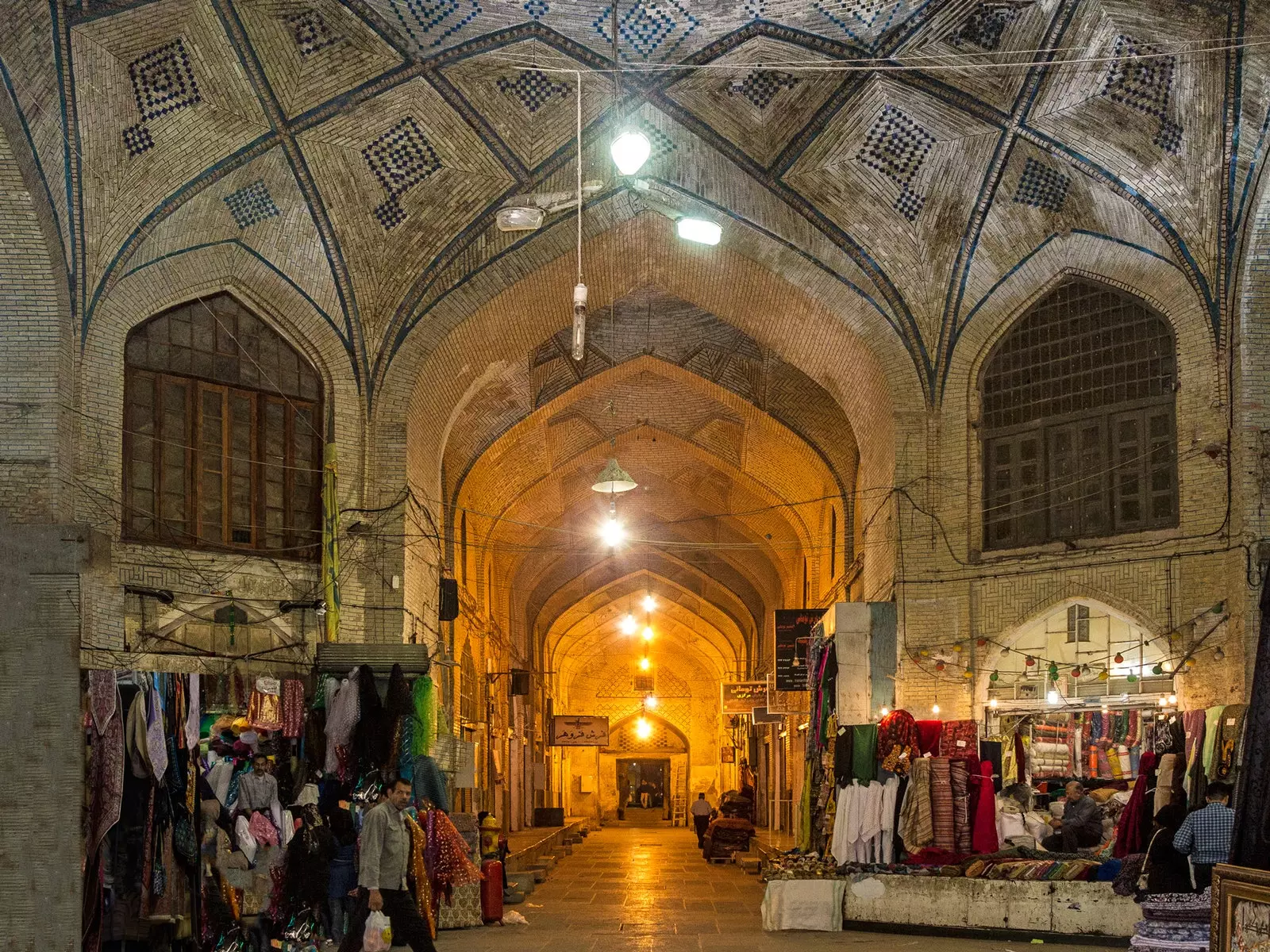
Entering the bazaar is the best way to introduce yourself and get to know the Iranian world
Shiraz, in the southwest of Iran, is located 500 kilometers away from Isfahan, one of the largest pearls of Persia.
Used by many as a base camp to venture to see the ancient city of Persepolis, has just a million and a half inhabitants, 2,500 years old and countless corners to discover.
To begin to delve into all those nooks and crannies that the one that was capital of Iran during the 32 years of the Zand dynasty (1747-1779), there is nothing like pulling the oldest and cheapest means of transport: my legs will be my best allies.
Thus, walking, I go to the place that never fails when it comes to knowing the culture of a people: I head towards the Vakil Bazaar, the largest and most popular market in the entire city.
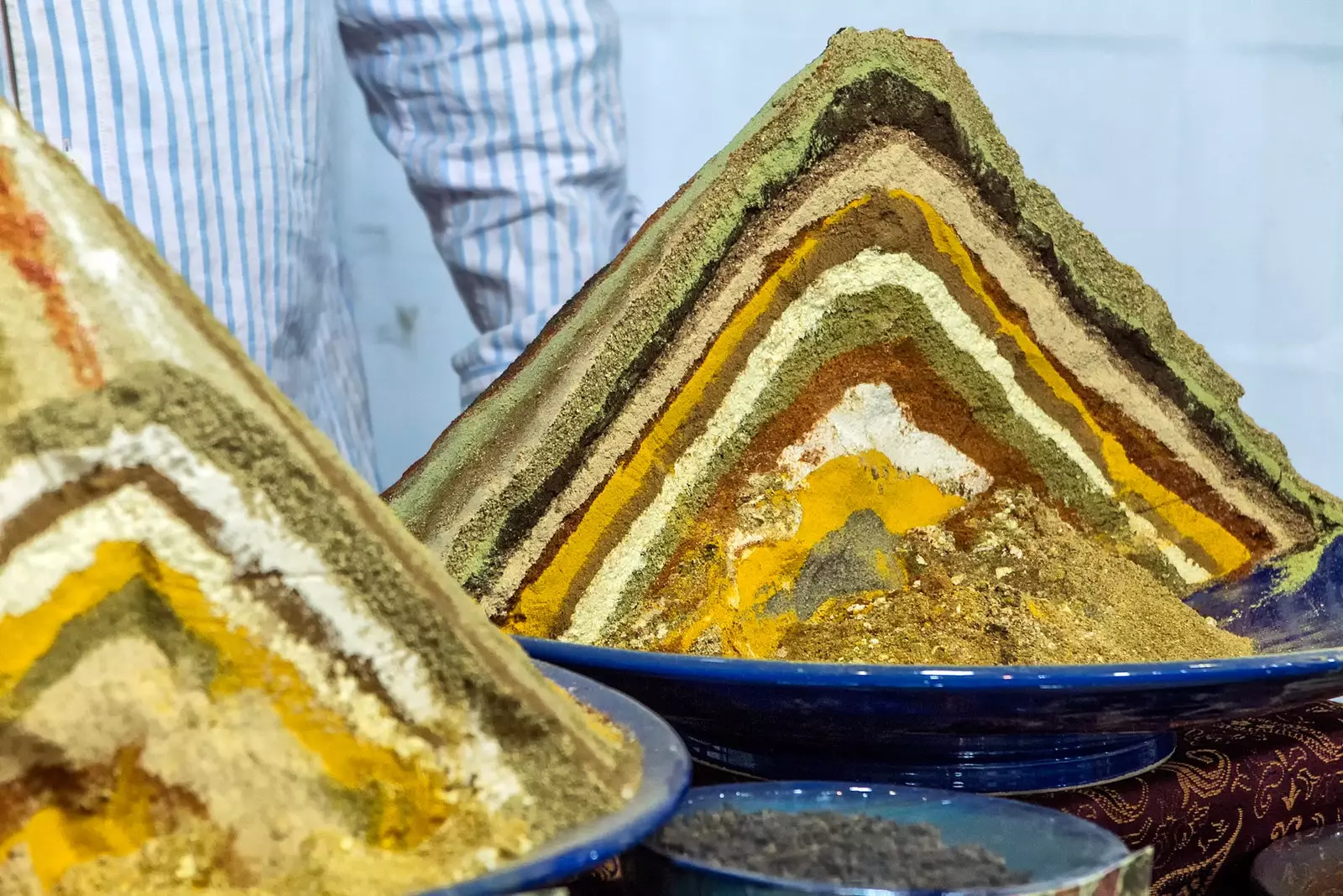
Spice shops permeate the atmosphere of Vakil Bazaar
As I go, I perceive it: Shiraz is one of those cities that are alive. The traffic moves incessantly between the narrowest alleys and the great avenues.
Men come and go, stop, greet, chat and they continue towards their destination while they, covered with their scarves –placed strategically and stylishly to, defiantly, show off without disturbing–, walk in pairs or groups, elegantly made up, taking care of the purchase and the children.
The emotion can me at every step. I continue my foray into the Iranian world without losing any detail. I enter the labyrinth of alleys of the Bazar Vakil and I immediately let myself be enveloped by the multitude of smells and sights that follow one another.
exotic name spices they make my imagination fly to past times. vivid colors make up the fabrics of those stalls run by tailors. Words in the beautiful language that is farsi they agree on the price to pay for an elaborate Persian rug.
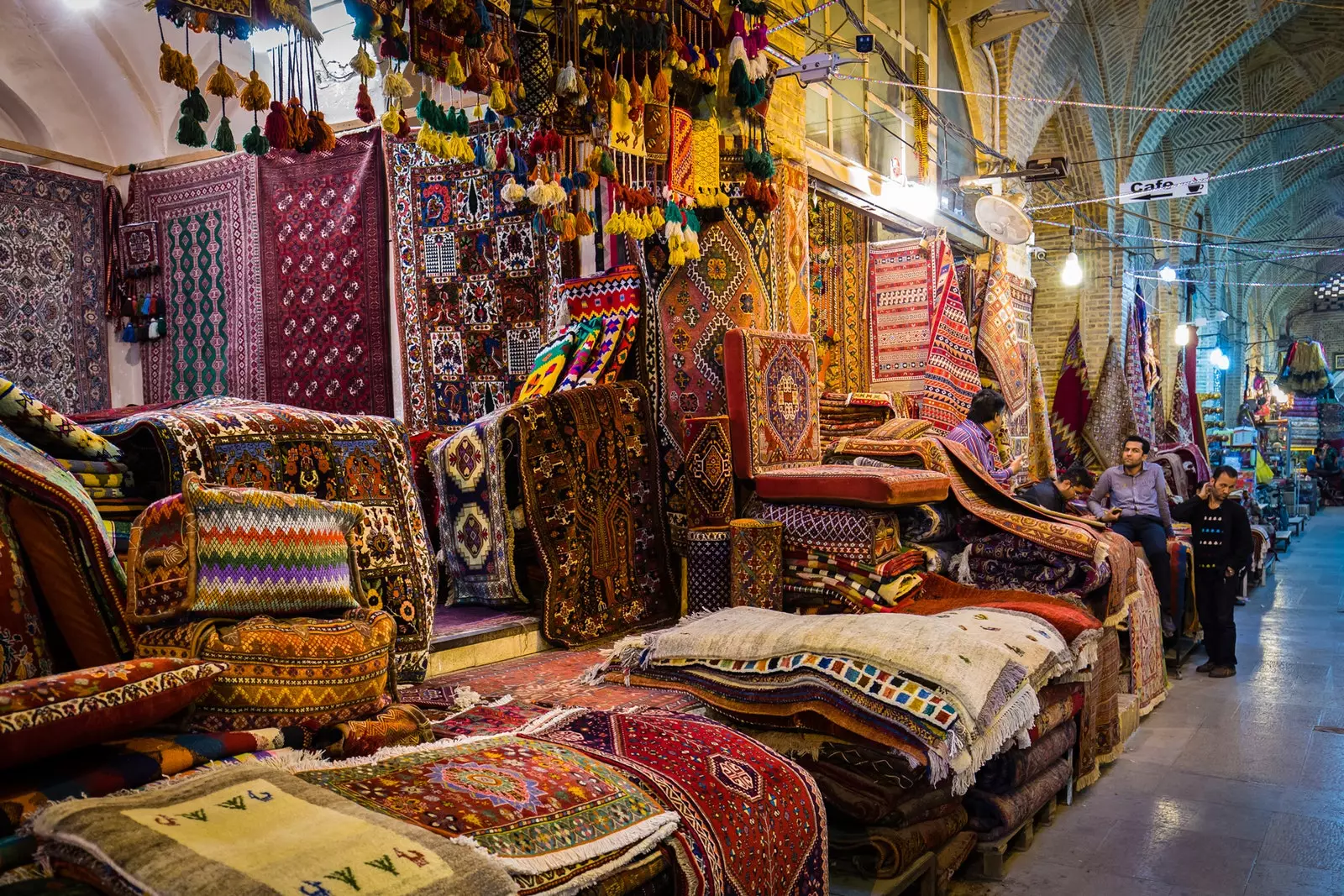
Persian rugs are one of the star products of the bazaar
It draws attention that in Shiraz everyone greets the tourist, shows how welcoming its people can be. Ask, even if it's by signs. He is interested in the origin, in the reasons why Iran has been chosen as a destination or in which places have amazed the most.
Proud, they stick out their chests and display their best smiles. And one can only return it excited. between posts of relics and antiques, chadors and scarves, a nice shopkeeper offers me to try some of the nuts that he sells.
Cheer me up with pistachios it's a safe bet. So much so that I end up with a half kilo bag in my backpack. Also with a couple of packs of saffron. Who can contain these Iranian delicacies?
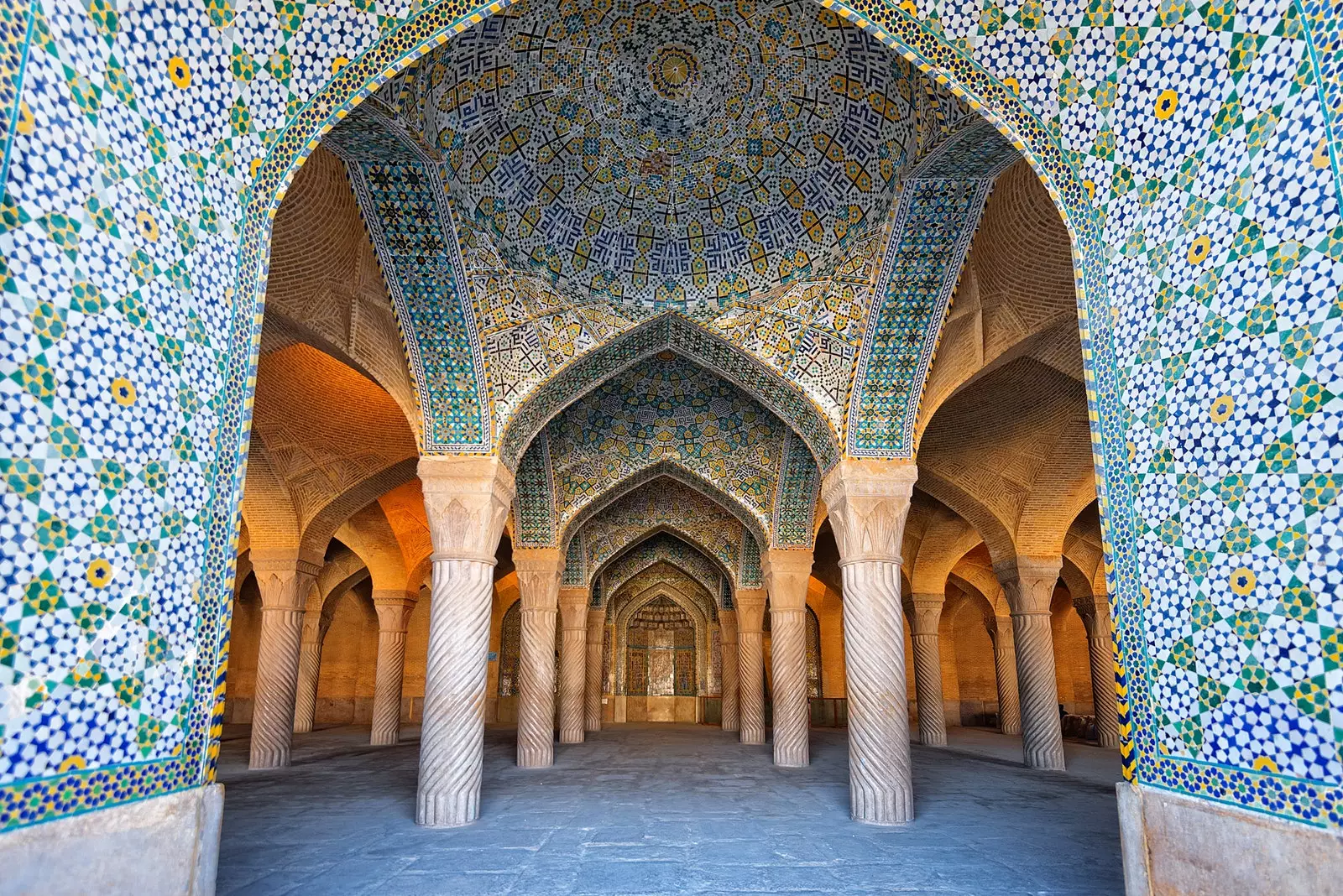
In the visit to the vakil mosque you will not be able to stop looking up
Seray-e Mher Teahouse , a small and charming place at the crossroads of alleys of the labyrinthine bazaar, is the ideal stop to rest and try its exquisite Roasted eggplants. When it comes to Iran, the gastronomic offer is not too varied, but those served here leave you speechless.
I leave the bazaar through the door that leads to the esplanade of the Vakil Mosque, one of the most beautiful temples in Shiraz –and, dare I say, Iran–. Thanks to the fact that tourism continues without deciding en masse to get to know this remote Asian country, it is possible visit treasures like this almost alone.
The impressive cover already leaves me completely stunned, but nothing to do with what it hides inside. Looking up will become a constant throughout the trip: the careful work of the vaults, made up of impossible drawings made with perfectly combined colors, is simply wonderful.
The extensive prayer hall with its 48 carved columns It is one of those corners that everyone wants to photograph from all possible perspectives. And I do. Well if I do.
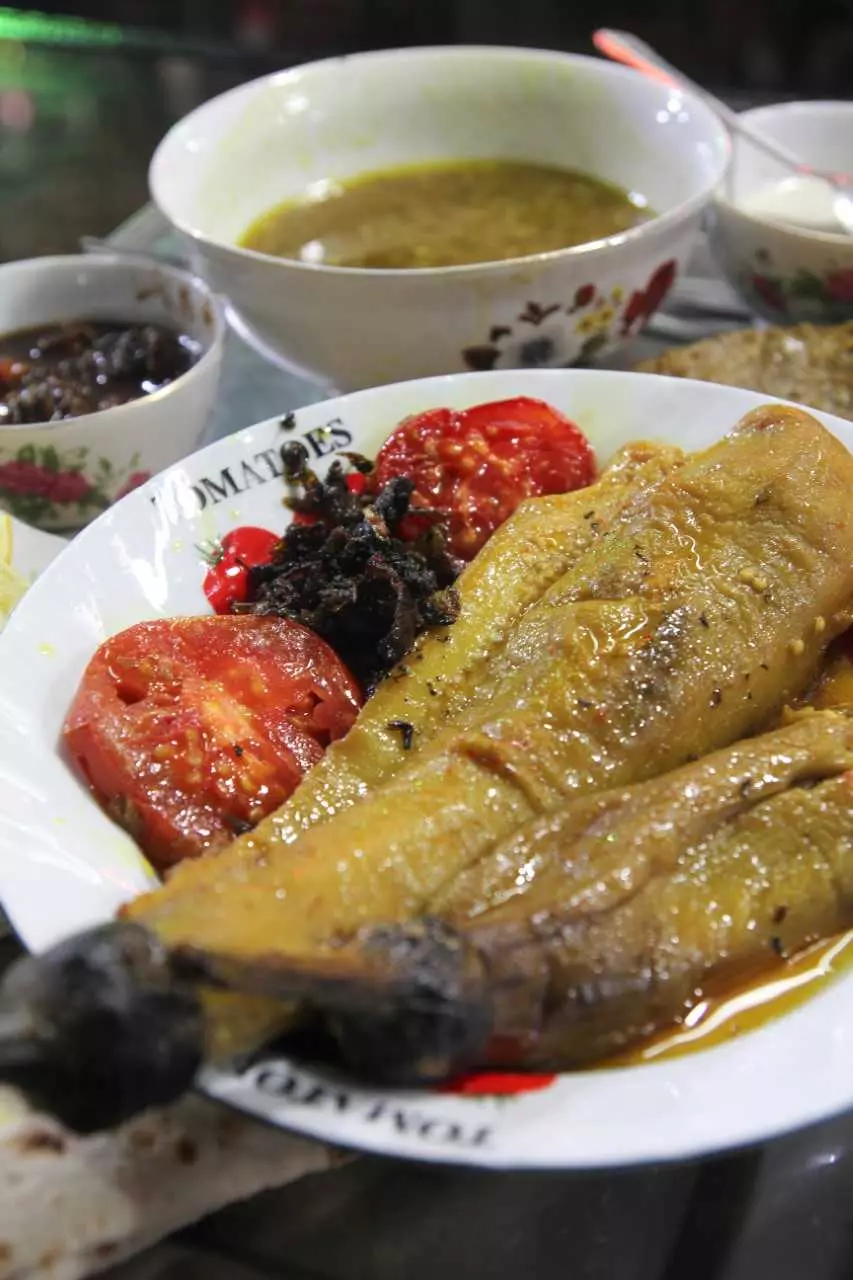
Seray-e Mher Teahouse's roasted eggplants are a real treat
Not far from the Vakil Mosque is one of the holiest places for Iranian Shiites: the mausoleum of the King of Light, Shah-e Cheragh, to which thousands of faithful make a pilgrimage.
Here, in a small temple whose interior is completely covered by millions of colored glass, the remains of Sayyed Mir Ahmad, one of the 17 brothers of Imam Reza, rest.
Women on one side, men on the other, both the entrance and the prayer areas are well differentiated so that there is no crossing between the two sexes.
Foreigners are required to wear a chador that they offer us before moving on to the central patios, where an official guide, and completely free of charge, explains the history and the most outstanding data of the place.
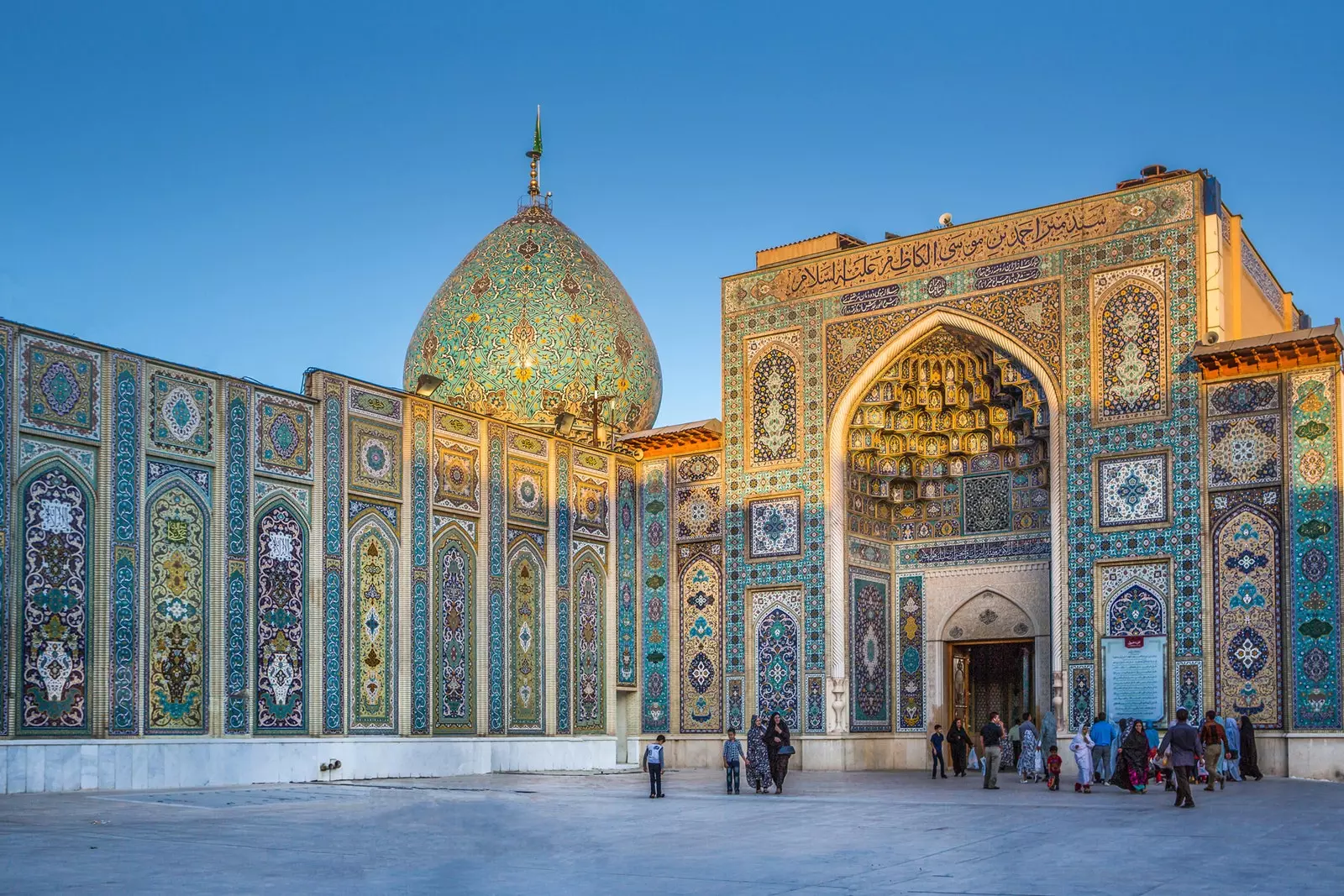
Shah-e Cheragh, also known as the mausoleum of the King of Light
And the walk through Shiraz continues, there is still much to see. The time has come to pay my respects to one of the most representative figures of the city and its culture: Hafez the poet.
I cross to the northern part of the river in a pleasant walk of two kilometers that takes me through the Melli Park, a public garden full of stray cats –Persians, of course!–, more than accustomed to contact with humans.
And, at this point, it is important to know that there is something that the Iranians defend without hesitation: every civilian should have in his possession two very important things, the Koran and a copy of Hafez's work.
The poet, treated as a true cultural hero who is loved by everyone in this country, he is buried in a tomb worthy of great leaders. I enter the park where his remains rest, I advance between two beautiful ponds and reach the stairs that take me to the great marble coffin with some of his verses engraved on it.
About me, an octagonal pavilion is supported by eight stone columns granting the place all the solemnity of the world. I sit in a corner and just let time pass. Noticed. It is the best way to understand the importance of this mystical place.
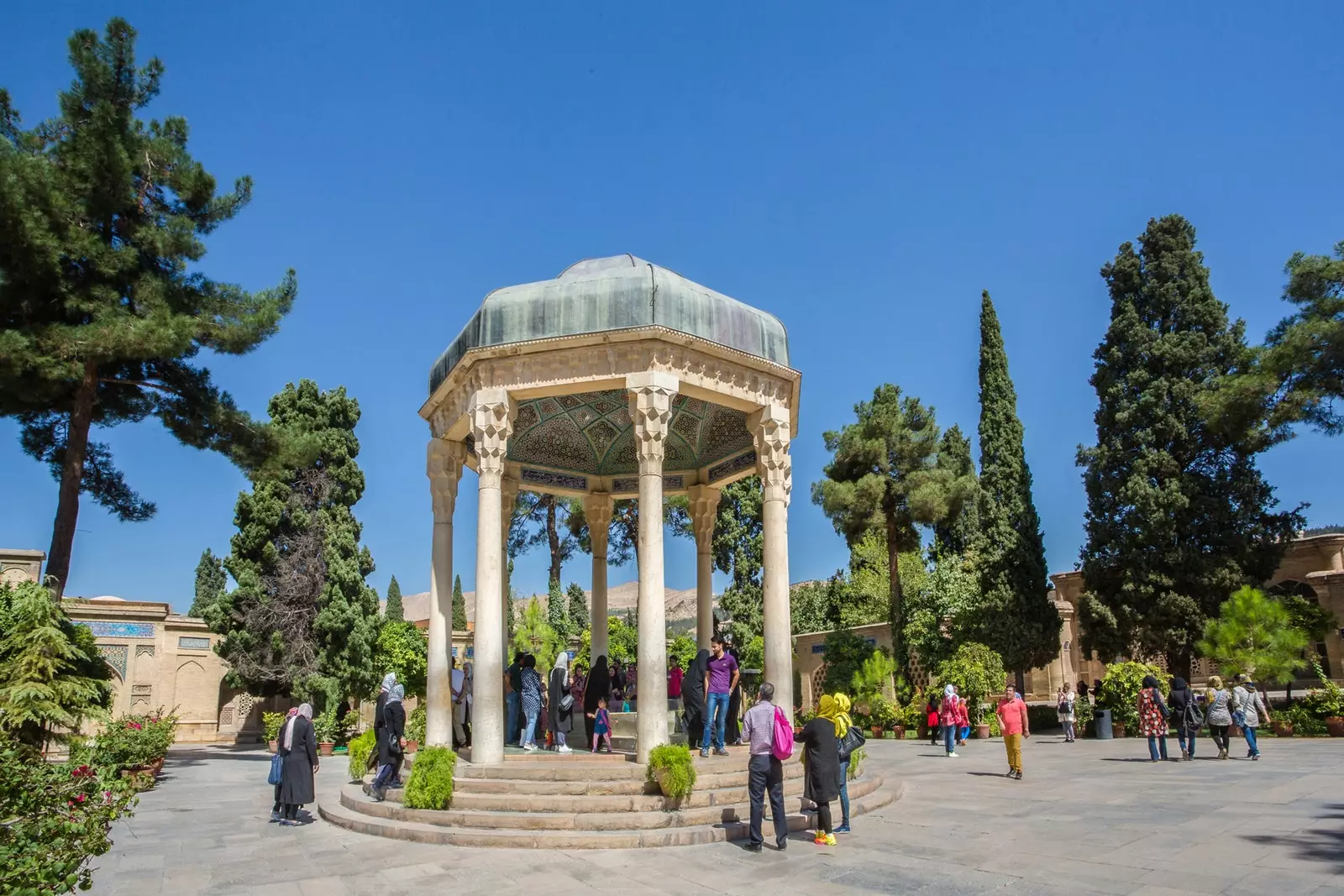
The tomb of the poet Hafez, one of the most representative figures of Iranian culture
On my way back to the center – okay, this time I am considering the possibility of taking a taxi, but, be careful, always negotiating the fare beforehand – I run into the high walls of the Karim Khan's fortress.
Built at the beginning of the Zand dynasty, with her they tried to compete to unseat –unsuccessfully– the beautiful Isfahan. As I walk around its surroundings –although it is also possible to visit its interior– its four immense circular towers decorated with different motifs catch my attention.
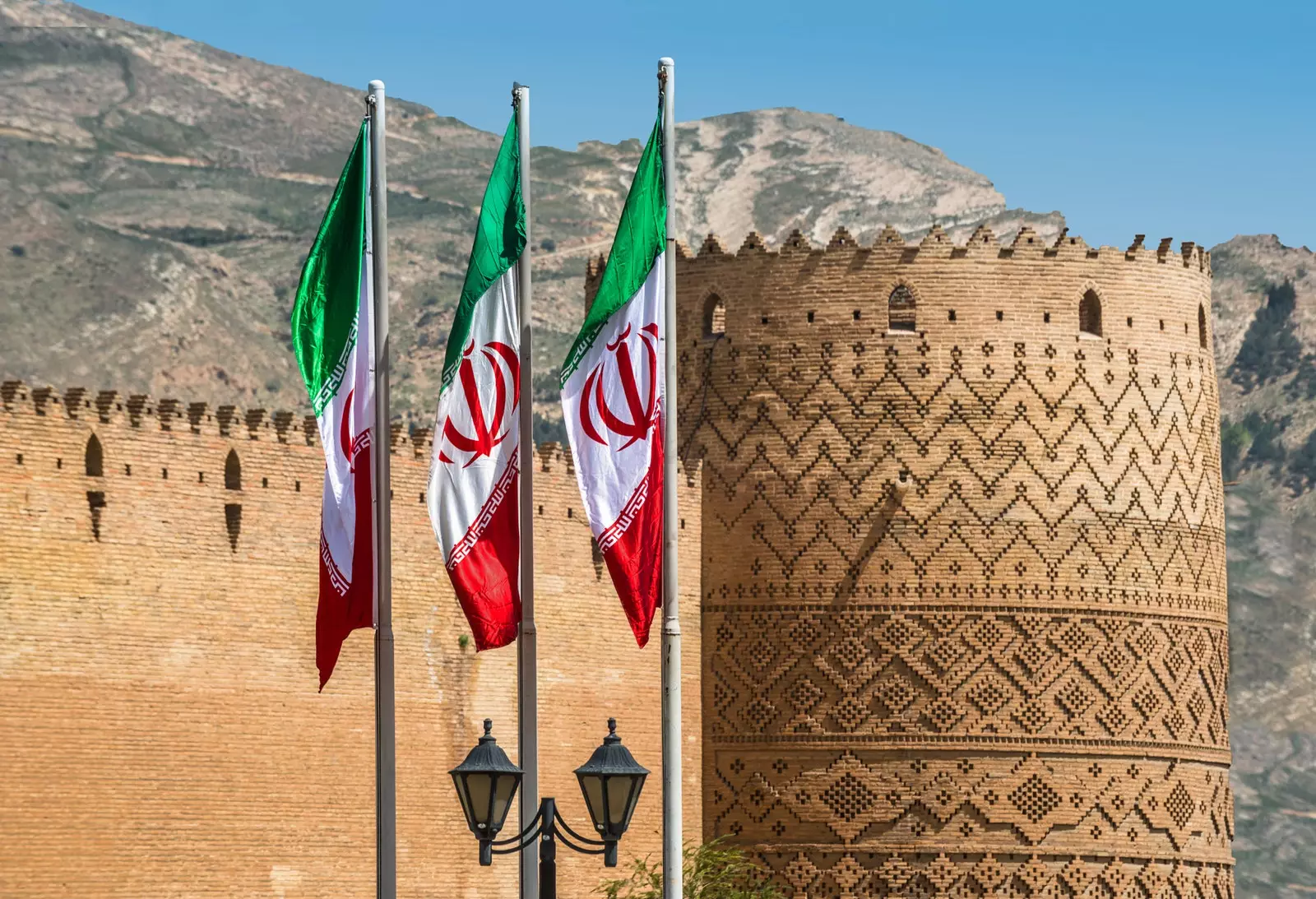
Karim Khan's fortress, built at the beginning of the Zand dynasty
In addition to its great poets and the great literary tradition of the city, there was a time when Shiraz was famous for its wines.
Although today it may seem incredible, one of the most radical countries when it comes to interpreting the Koran and, therefore, in which alcohol is absolutely prohibited, had a wine-making past that many already wanted: thousands of vines populated the fertile valley that surrounded the city. Vines that today, unfortunately for everyone, have disappeared.
So sitting down to eat at the elegant Kateh Mas restaurant, the best place to try traditional Iranian food in Shiraz –tahchin is the quintessential national recipe, a rice and saffron cake with pieces of meat or fish inside–, I decide to accompany the meal with a soft drink while I fantasize about those incomparable broths that were so successful in the world.
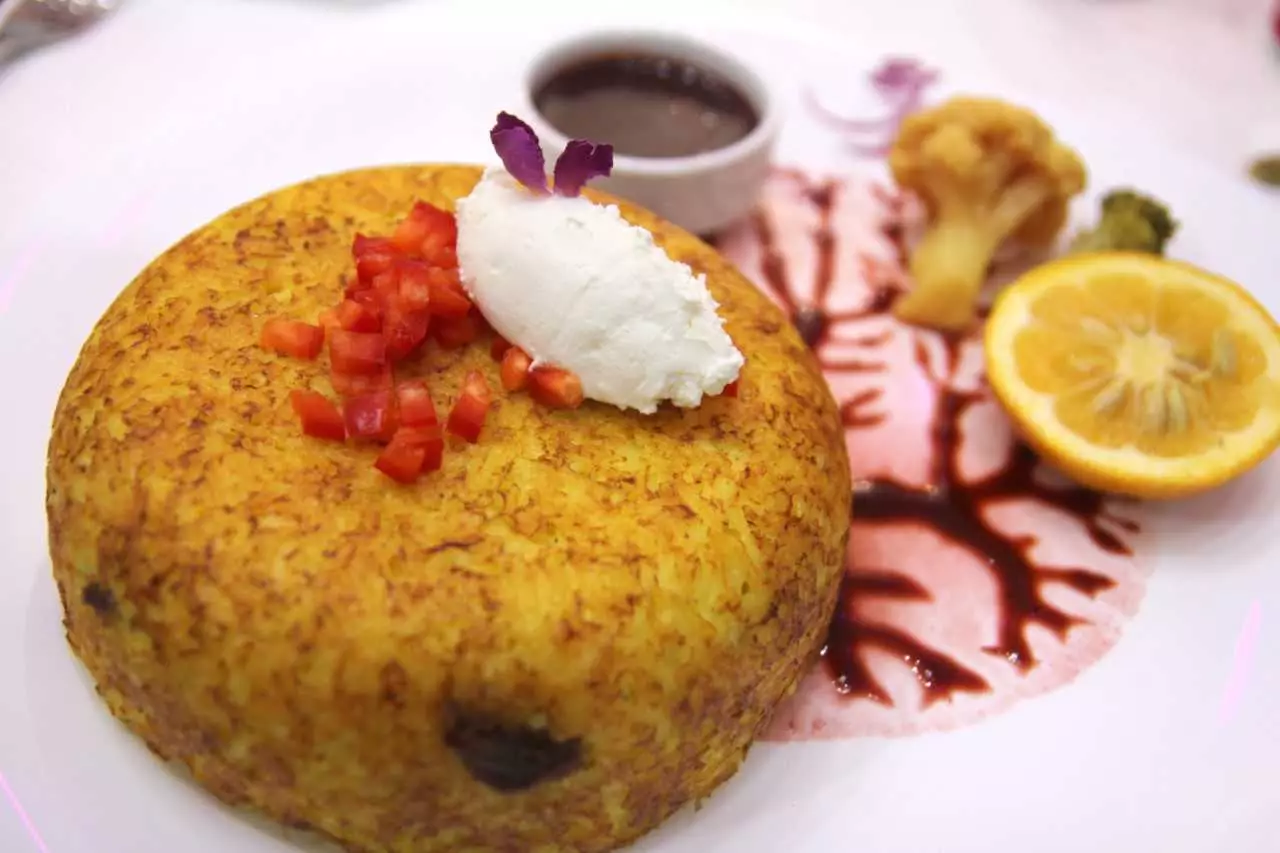
The tahchin, one of the typical Iranian dishes based on meat or fish, rice and saffron
And once my stomach is full, the most anticipated moment arrives: I head to the last corner of the route through this fascinating city. to enjoy the most photographed stamp. Of the most revered. From that image that represents, in large part, Shiraz: the winter prayer hall of Masjed-e Nasir Al Molk , popularly called 'The Pink Mosque'.
See the reflection of its stained glass windows in the beautiful Persian carpet floor It is, without a doubt, one of the moments I have dreamed of since I set foot on Iranian soil.
And here, from one of the corners of this temple built in the 19th century, I take stock of the day. Mosques, literature, bazaars, wines, parks, history... The perfect conjugation of past and present have shown me a most authentic city.
Shiraz is, without a doubt, Iran in a pure state.
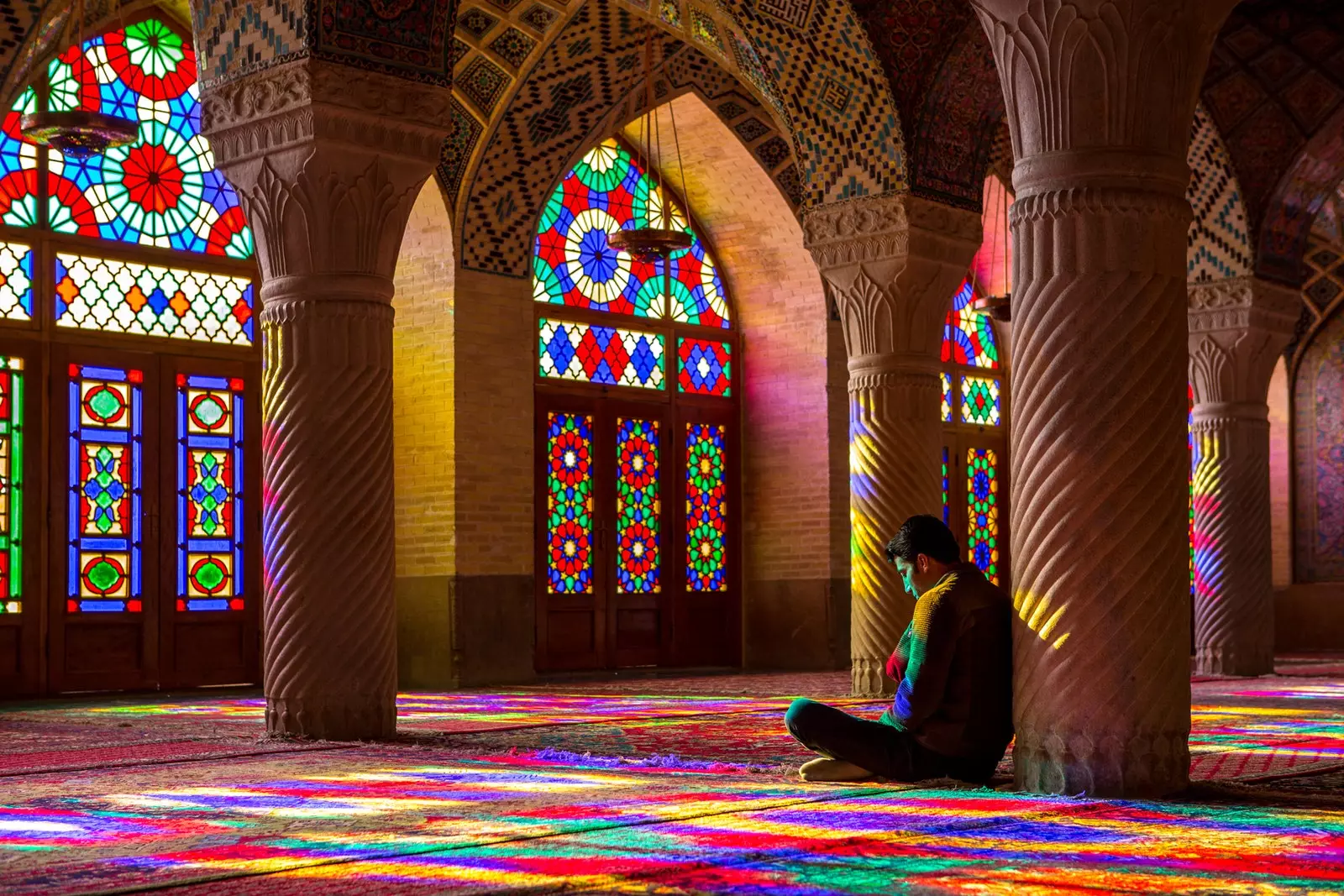
'The Pink Mosque', one of the most photographed images of the city
